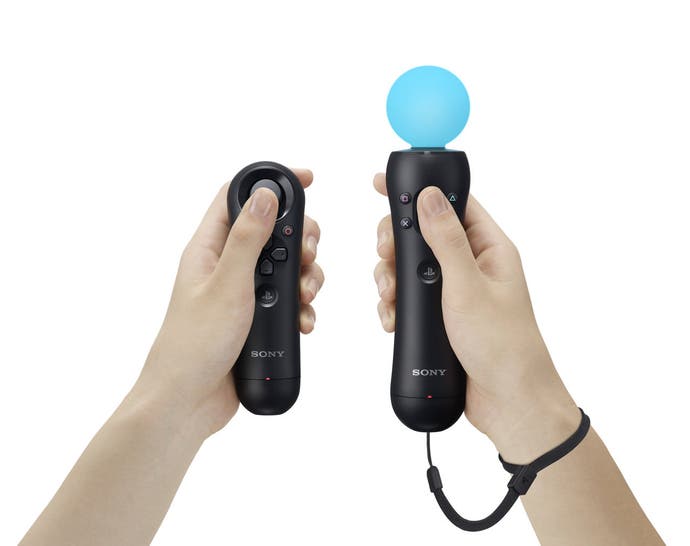Tech Interview: PlayStation Move
Digital Foundry vs. Dr Richard Marks.
With Microsoft Kinect and Nintendo 3DS dominating the E3 headlines, it is perhaps too easy to overlook the strong showing of PlayStation Move at the industry's showpiece event.
The launch line-up of games is looking impressive: bespoke Move titles like Start the Party are genuinely great fun, previous hits like Heavy Rain are getting the upgrade treatment with well-realised interface implementations, while forthcoming heavy-hitters from Sony such as Killzone 3, Gran Turismo 5 and LittleBigPlanet 2 are all slated to support the new hardware.
While Move doesn't have the sci-fi allure of Kinect, the foundations of its basic design are extremely strong, and its performance in terms of precision and latency is best-in-class. There's also the device's basic flexibility: Move can "do" gesture-based games similar to Harmonix's excellent Kinect title, Dance Central. The E3 unveiling of the accomplished SingStar Dance proved that while full-body scanning can't be achieved, the overall effect turns out to be much the same.
Moreover, unlike Kinect, core titles can be easily supported. SOCOM 4 demonstrated that Move adds genuine value to a tactical shooter in a way that simply couldn't be implemented on the competing HD motion controller, providing a naturally intuitive interface that we found to be markedly superior to the standard DualShock setup.
However, it's fair to say that reception to PlayStation Move hasn't been uniformly positive. There's a train of thought that suggests perhaps Move doesn't offer enough to differentiate it from the Wii remote, that the accuracy and performance it represents isn't the hook required to bring the casual audience to the PlayStation 3.
So, when Sony offered us the chance to speak one-to-one with R&D Manager of Special Projects, Dr Richard Marks, that was the very first point we put to him...


My colleague Anton [Mikhailov] has a really good way of summarising that actually. The thing that matters to the average person is not how precise it is or how responsive it is at all. Those words don't have much meaning to them, but how well connected you feel to the game matters. They want to feel like their actions matter. They don't care if it's sub-millimetre or anything like that. They want to know that what they're doing is having an effect. That 1:1 feeling of it doing the right thing is all that matters.
The broad numbers aren't so important but the fact that it feels right when you use it, that's what matters. The way we think about it is that there's a data layer and that has to be really good. On top of that you have the interpretation layer: how you choose to interpret that data. We want to give the game developers as much freedom as possible to interpret the game data so if the data is as good as possible they have more freedom to interpret it as they want. They can smooth the heck out of it, make it super-sluggish or super-stable or they can make it super-responsive. We want that creative freedom to be available to the game developer.
If we wanted them to make one kind of game, we would have tuned everything to that one kind of experience. That's all it would do, and that's not what we tried to do.
Yeah, actually we did...
Right. I'm still a heavy proponent of 3D cameras. I think they're really interesting technology. We had many different 3D camera prototypes and we had our game teams look into that to evaluate what they could do with it. There are some experiences that it can do that are really neat but there just weren't enough experiences that made it make enough sense as a platform-level controller.
Coming back is that sometimes we need buttons to have certain kinds of experiences. Other times we need more precision than we can get out of those cameras. We need to know exactly what you're doing with your hands, especially in the more hardcore experiences.
If it's just that 3D camera, yeah I guess. That's what we ran into with EyeToy. When you have only the camera, it's a magical feeling but sometimes you just wish you could select something. I don't want to wave to click a button.








